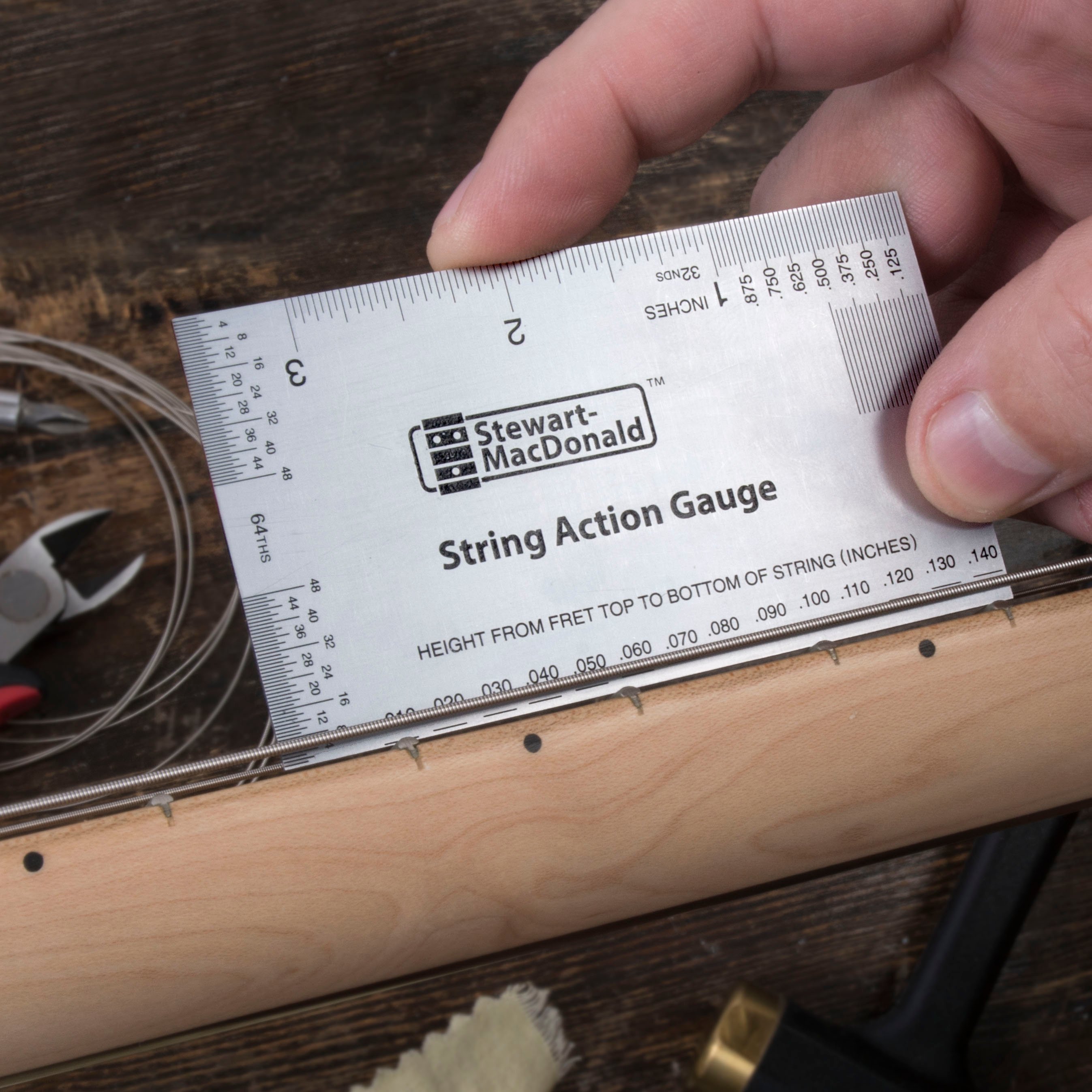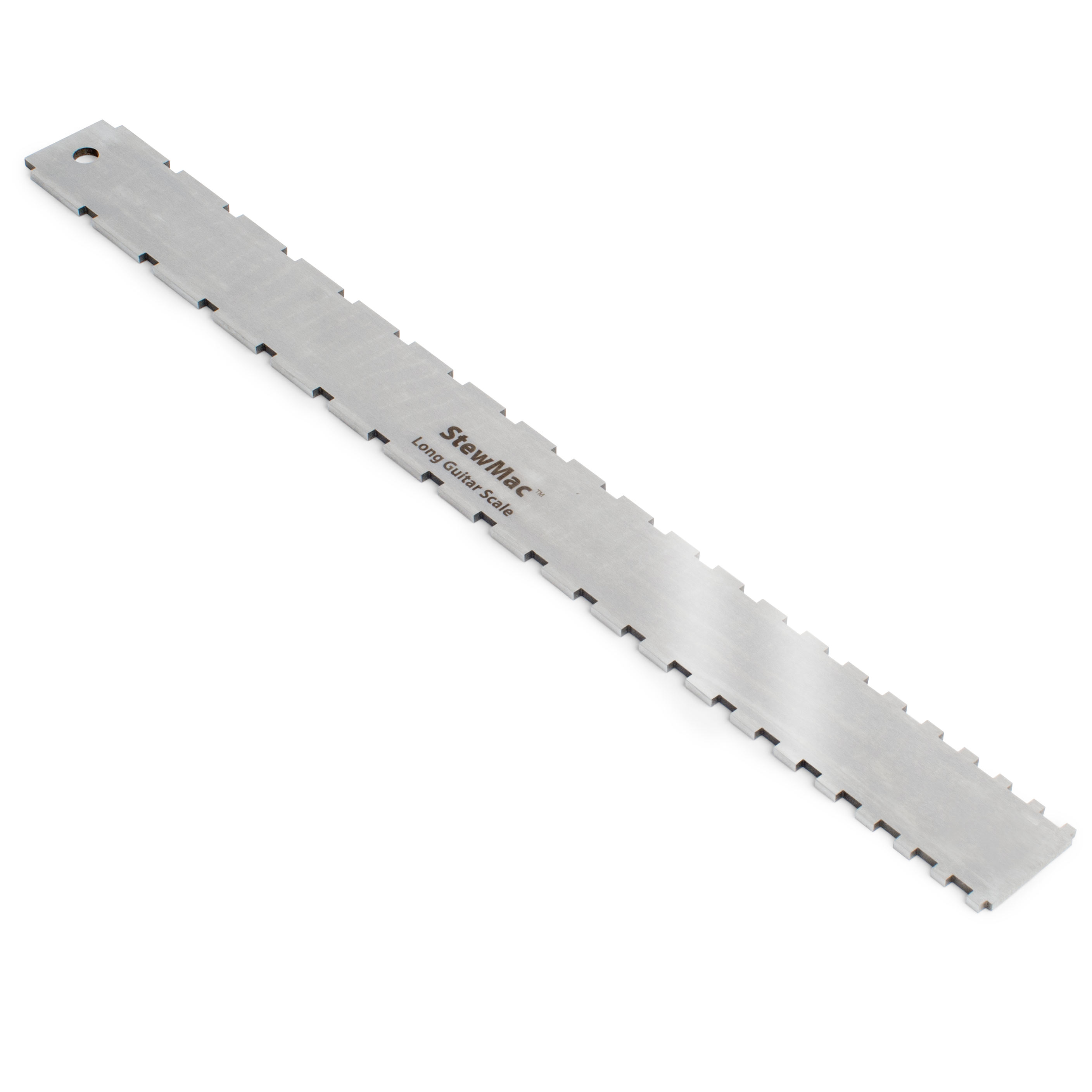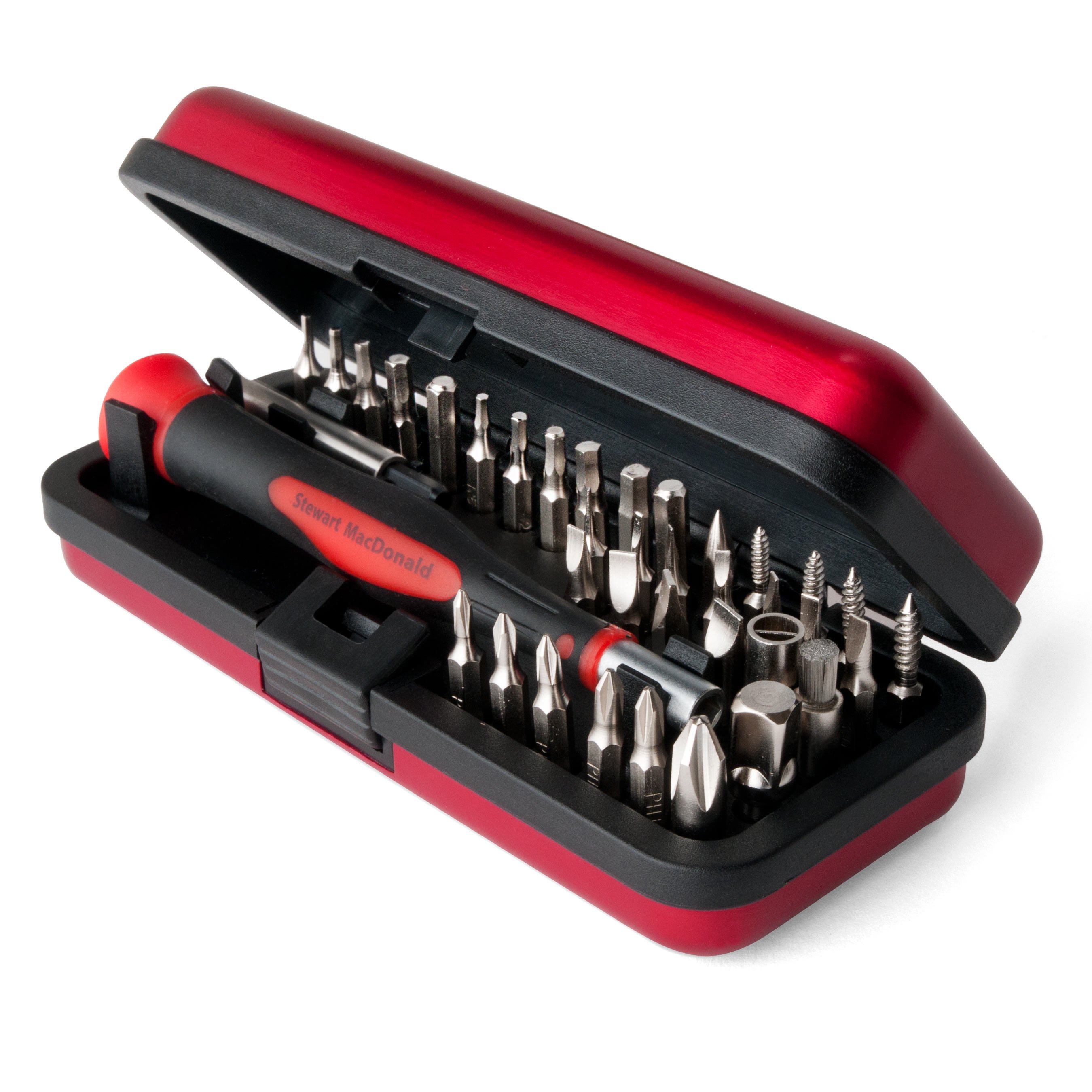Joe Bonamassa sound check: backstage tips
Issue 249 September 24, 2015
Dan Erlewine visits backstage with the great blues guitarist, Joe Bonamassa and his highly experienced tech, Mike Hickey. Joe talks guitars with Dan, and Mike shares two guitar setup tips.
About the guitars in this video: Joe talks about his 1959 Les Paul named “Snakebite,” and Mike restrings the original “Lucy,” the Flying V Dan built for Albert King in 1972.
- Joe Bonamassa talks about playing-in a guitar that’s been refretted
- Mike Hickey’s quick restringing method
- Mike talks about top-wrapping the tailpiece on Joe’s “Snakebite” Les Paul
- Dan measures the action on Joe’s guitars
Video Transcription
Dan Erlewine: [on screen text reads: Stewart-MacDonald Trade Secrets!] Man, last weekend, I got to hear the Joe Bonamassa band in Dayton. I was invited to soundcheck even. I went over there with my straight edges and my action gauge, because I really wanted to see how he sets his guitars up. He was on the Three Kings Tour, doing the music of Albert King, B.B. King, and Freddie King. And he had along the guitar that I made for Albert King named Lucy, in 1972, and I got a chance to play her again. His tech, Mike Hickey, had some great trade secrets for us too. [on screen text reads: 2 Trade Secrets from Mike Hickey]
It's a really big tour. They even travel with a kitchen and a chef. Joe can really play, and he brought a ton of guitars to play. It was fun talking with him about those guitars, and getting to play them. Joe and I compared a newly built Flying V Lucy, that I just made, to the original I made for Albert.
Trade secrets from Mike Hickey
Joe Bonamassa: Now, how old is this one?
Dan Erlewine: Two weeks.
Joe Bonamassa: Oh, two weeks.
Speaker 3: Two weeks ago?
Speaker 4: Two weeks?
Dan Erlewine: I'm taking them to [inaudible 00:01:04]. They make [inaudible 00:01:04]
Joe Bonamassa: Right.
Dan Erlewine: I made these-
And he showed me the fender tweed amps he's using on this tour.
Joe Bonamassa: These are ready to go [inaudible 00:01:14]. Either rhythm-
Dan Erlewine: There were four amps, but they were all set pretty much like this. [on screen image shows amp configuration]
Joe Bonamassa: Yeah. This guitar is a snake bite, and this is one of my main live, Les Pauls. Joe Glazer refret it. When you do refret something, the guitar seems to go into a little bit of a shock for a couple weeks, but all you really got to do is just play the frets in. The big blues stuff with the bends and all of a sudden, these nice new frets just kind of slightly worn in. And now the guitar is probably the best playing Les Paul I have. It's got nice patina. I call it the snakebite because of the Bigsby. I love the fact that the holes weren't filled. You're never going to undo that. So why even bother trying to hold it? [inaudible 00:01:58] Couple holes in the top.
Dan Erlewine: Snakebite.
Joe Bonamassa: Snakebite.
Dan Erlewine: This is my friend Mike Hickey. He's the tech for the Joe Bonamasso band here in Dayton, Ohio. And he's stringing up the guitar I made Albert King back in 1972.
Mike Hickey: Lucy.
Dan Erlewine: It gets played on one song on the Three Kings Tour. I'm curious how he ties the strings on for Joe. [Mike starts cutting the strings] Everyone does it differently. [on screen text reads: Quick way to tie on strings]
Quick way to tie on strings
Mike Hickey: All right, first, I'm just going to get rid of these worn out strings. Tying them on the way I do it is also for the ease of getting them off, so I can change a lot of strings quickly in one afternoon or in one hour and get quite a few. [Mike pulls the strings off the guitar] So all those are off just like that.
Dan Erlewine: Souvenir.
Mike Hickey: And we jam these out and those look like you used fender bass grommets, ferals.[Mike pushes the strings down through the grommets]
Dan Erlewine: I think that's what they were.
Mike Hickey: Yeah?
Dan Erlewine: Back then.
Mike Hickey: When you built this, it had Gibson Humbuckers that you engraved?
Dan Erlewine: I did. Since Albert King came from Erlewine Instruments May 19, 1972.
Mike Hickey: 1972.
Dan Erlewine: And let's get back to that.
Mike Hickey: And this guitar was on the cover of guitar player in 1977.
Dan Erlewine: Yep.
Mike Hickey: That's right. I had that issue. I had shorter hair then in 1977, but I still liked Albert King and I didn't even really know much about him. [Mike is feeding the strings through the grommets] Get the bottom string on, pull it uptight, set it in the saddle. And then one of the tricks is on a Gibson style instrument like this, to go to the next tuner, then pull your string back, roll it over once, kink it. And you notice I'm keeping my hand up like this. I'm not going to run the string through the nut until it's tight. And then you get one over and one under and maybe an extra, but that's really all you need. You don't need to go like through and tie a sailor's knot. And then you're trapped, when you got to change the string fast you're trapped. And you get in the saddle, always cut it immediately.
So if you cut all six at once, you could cut one of the brand new strings that you just put on. Rinse and repeat, rinse and repeat. All the kids are psyched. [On screen text reads: Joe's string gauges: E: 52, A: 42, D: 30, G:18, B: 13, E:11] All the blues fans get what they came for and that's really all there is to it.
Top-wrapping a stop-bar tailpiece
[On screen text reads: Top-wrapping a stop-bar tailpiece] So a lot of people like to top wrap the Les Paul and I was breaking a lot of strings when I first did it. Plus I was getting my hand touching the end of the winding, which on the treble strings is often a sharp point. So I wanted to get the winding in further. Well, you've got this end of the winding here, the thicker part of the string, and that can be scraping on your palm. But when I put it through now and there's another ball end, I slide on there and that pulls the string back just a little. And you see now it's hard to see this, but there's less winding sticking out. So it won't be up where my palm might hit.
And then I'll wrap it around the top on a Les Paul in order to do two things. First look cool, like Billy Gibbons. Second, keep the string from touching the back of the bridge and caving in the bridge, which is a common problem on an old Les Paul. This one's starting to cave, but it's been in service since 1959. So we're going to just leave it there and deal with it. But yeah, basically, that's it. And then when you pull your string through, you don't have that piece sticking up into your hand.
Checking the action
Dan Erlewine: I'm always curious what the space is underneath the strings to know how high that kinematic is. 39/64". That's how far that bridge is up off the top. I'm always curious about that. This is the one that has a pretty low action and Joe just raised it up. It was too low for him. [Dan puts the StewMac String Action Gauge on the guitars fretboard] And sitting on this rest, I get 90 thousandths under the E and 80 under that E.
Mike Hickey: On that ES-345 there, [on screen text reads: .090" Low E, .080" High E] that's probably the lowest action that Joe's using. There's a 355 where the frets are so low, that everything's just low, but it buzzes. And so we just don't play that open string and everybody's happy.
Dan Erlewine: If you really want to check it, you got to get in that position, which isn't easy to do at this venue. It's maybe 82 thousandths and this is a perfectly good action for me right here. The neck is straight. You couldn't get-
Mike Hickey: Most of those old Gibson's are really straight. They stayed up.
Dan Erlewine: A lot of people like to loosen the truss rod and get relief.
Mike Hickey: A little bit of relief.
Dan Erlewine: But then you lose tone. As soon as you don't tighten the rod and it's not jamming the sound. Try it with all these guitars, just loosen the truss rod on a good guitar and the sound will be gone.
Mike Hickey: It gets rubbery.
Dan Erlewine: Yep. That's the word for it, floppy. On my way to Dayton, I was halfway out of town and forgot my string action gauge. And I turned around and went back and got it. That's how important it is because instead of reading like 19/64" or 128ths, you can read 80, 90, 100. You read in thousandths. It's really accurate.







